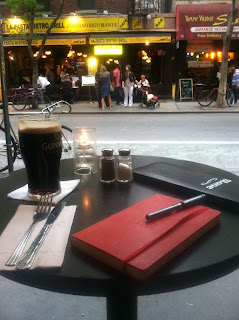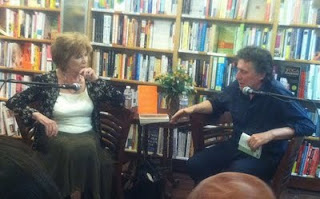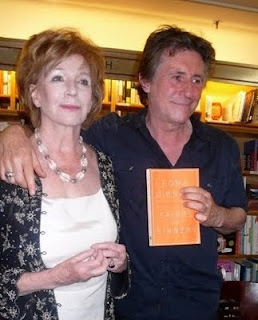I’m always surprised and delighted by the sheer number of fascinating, artsy events happening in Toronto at any given time. In addition to Art Battle, A Work Of Heart, which also features live painting, is coming up soon. A Work Of Heart is an initiative that brings together artists and philanthropy in a spirit of cooperation, self-determination, curiosity and sharing. To quote its current release, “artwork is donated by seven local artists… half of the proceeds will go towards building a boarding school in Kenya’s Mathare Slum.”
Owing to conversations with TMS Ruge and other experts in the field of aid and development, I’ve developed a kind of mental alarm system for anything resembling Western-style feel-good-isms toward African nations. Too often those efforts are exercises in narcissism and brand-building, offering simplistic answers and reflecting the organizers’ romanticized (/stereotypical /racist) image of Africa and its citizens moreso than actively acknowledging the messy, complicated, multi-layered world of development and well, humanity overall. It’s easy to reduce a nation -its citizens within it, its continent around it -to easy slogans and poetic images, ones colored by celebrity visits and ad campaigns and big-ass concerts.
Casey: I also became extremely interested in aid and development issues while a student at Wilfrid Laurier. I have spent time volunteering in Morocco and Dominican Republic. Working and living with the local people in another country is a very different experience than simply visiting that location and its renowned tourist destinations. You get to really know the place, the people, their way of life and their motivations when you immerse yourself in their lifestyle.
The main thing I hear and read is that Western-style gestures don’t help in implementing long-term change – that it’s feel-good-ism for the privileged. How much of this initiative is about the long-term?
Laura: We work with an organization called Living Positive Kenya (LPK) which is located in the Mathare Slum, the second largest slum in Aftrica. This NGO is a support group for women and children living with HIV. Mary Wanderi, who founded this NGO (and is currently Director of Living Positive Ngong), is a pervious social worker who had the heart-breaking job of going into the homes of women who have died and retrieving their children. After dealing with an overwhelming amount of HIV related deaths she decided she had to take action. She then created LPK.
Why did you create A Work Of Heart?
Laura: I want to be there for the long haul. I am not looking for the the international ‘feel-good-ism’ experience and to simply walk away. These women aren’t just a group we support- they are our friends. We work together to figure out what the deeper problems are in the slum and try to find solutions that work for them and their community. After my first trip to Kenya, I felt that the amount of money needed to upgrade the LPK daycare was something I could easily fundraise. Selling my art seemed like the best bet to raise that money in my spare time. I paint as a hobby so it was nice to have a reason to do it more often.
What role do you see for art in helping to create social change?
Laura: Artists in general have a lot of passion and are always looking for ways to push boundaries with their talent. A Work of Heart allows them to push a new boundary because their art can now physically change a life for the better. Art is impossible to define but can be best described as something that makes us feel less alone. We want to take this concept and broaden it beyond the painting. Through the selling of our art we can connect to people across the world who are in grave need. It’s not just about painting a great picture; it’s about ‘painting a better world.’
Casey: Art is a positive practice that crosses language barriers and can be experienced globally. Art is exciting because it can mean something different to different people and create an emotional response. There is no right or wrong way to paint or be involved with art. I think that this project exemplifies how one person really can make a difference and that visual art, along with all types of art, like music, dance, can have a global reach and connect the world.
How do you find artists?
Laura: Networking. I have friends who paint who know other artists. It has slowly been growing over the past year. People I have never met want to donate pieces to me because they love the concept. It’s a great feeling to see how other artists connect to it so quickly and so passionately.
How do you hope to expand Work Of Heart and its reach?
Laura: We have decided to push our goals and limits further each year. Last year we aimed to raise $1,000.00 and this year we want to raise $10,000.00. This is our first art show. We hope to have larger ones down the road and have more artists from the GTA involved. We have a deep connection to the women and children we work with in Kenya and want to help them build a sustainable community for their children and themselves.
Casey: I hope to continue to raise positive awareness for A Work of Heart through the media and help to build a solid base of supporters. I am passionate about this project and happy to pitch something I truly believe in.




